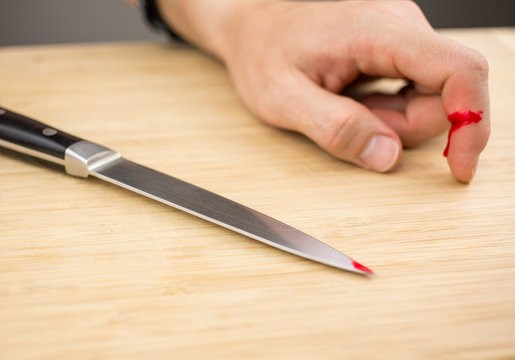Inspirational journeys
Follow the stories of academics and their research expeditions
How to manage a patient with Knife Cut

Accidental
knife cuts referred to as lacerations are seldom life-threatening. If someone
sustains such injuries then the goals are to:
·
Minimize
infection
·
Promote
healing
·
Decrease
the necessity for surgical intervention
The
first factor you ought to do with any laceration is calm the victim and, once
attainable, elevate the affected part of the body higher than the level of the
victim’s heart. Wear first-aid gloves and protect your eyes.
The
next step is to stop the blood. This can be best accomplished by applying
direct and constant pressure to the wound by employing a wadded sterile
compress, cloth, or direct hand-to-wound contact (that’s why you “gloved up”)
if needed.
Hold
pressure for a full ten to fifteen minutes. If you still see the blood oozing
out, then the clock resets and you got yourself another ten to fifteen minutes.
Then consider a pressure bandage, compression bandage or alternative additional
extreme measures.
With
the blood stopped, take a look and in-depth inspect the injury. Check the
pulses around the wound; they must be sturdy and regular. The tissue surrounding
the wound ought to be warm and pink with no loss of sensation, and all the
motor activities need to be intact. In general, any variations from these needs
to be taken seriously, and call for immediate medical attention.
Now,
you've got to scrub/irrigate the wound to forestall infection. The simplest
irrigants are traditional saline and sterile water.
Avoid
the use of iodine (Betadine), lotion, and oxide, which may cause additional
tissue harm.
The
irrigation stream needs to have enough force behind it to dislodge any foreign
material while not injuring the tissue beneath and you've got to use caution to
not push harmful material deeper into the wound. The goal isn't to soak the
wound but to scrub it. Use a minimum of one liter of irrigation fluid to scrub
every wound.
When
irrigation is done, bandage a laceration with non-adherent dressings made of
materials such as Telfa, Xeroform, Adaptic, and Aquaphor. You can apply an antiseptic
ointment like an antibiotic to the surface of the wound before seeking proper medical
care
Be
sure to stay up-to-date on your tetanus shots and seek skilled medical
attention as early as possible!
0 Comments
Categories
Recent posts
IQAI: Transforming Healthcare - One Success Story at a Time
Wed, 20 Sep 2023





Leave a comment